NYC’s Forgotten ‘War on Christmas Trees’
Discover how an obscure holiday crackdown affects festive street vendors today!


It’s no surprise that New York City, which boasts five hundred miles of coastline, is directly shaped by the water that surrounds it. Situated on one of the largest natural harbors in the world, it once required many lighthouses to aid maritime navigators during their nautical journeys.
While a number of such fixtures are no longer active, they are still a sight to behold — not only for their architectural and aesthetic legacy, but also for their history.
Along the Hudson River, there are seven lighthouses that you can still see today:
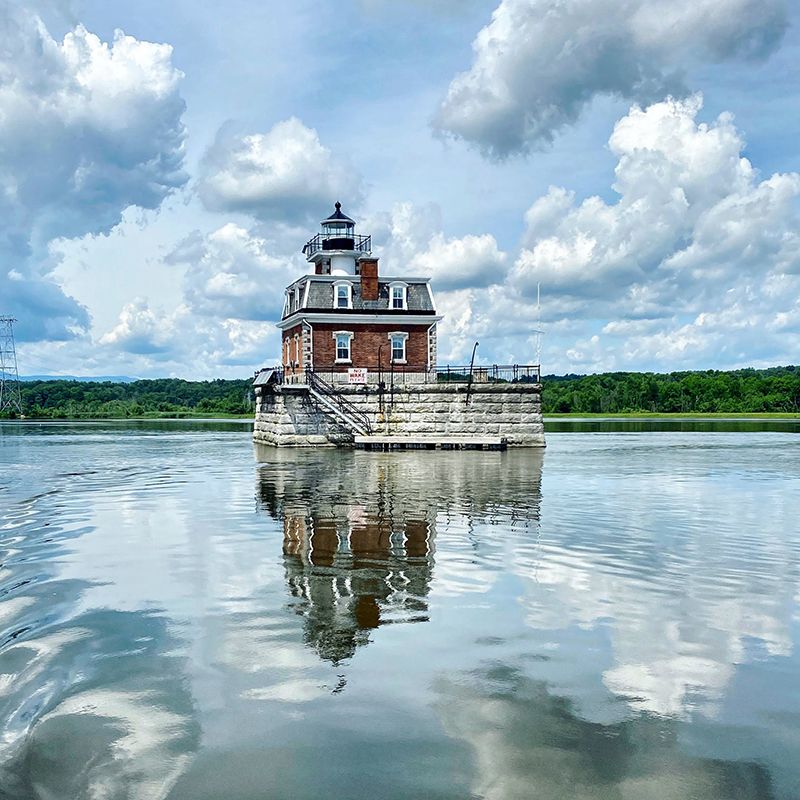
Photo by Katy Pearce courtesy of Preservation League of NYS
This red brick and granite lighthouse, situated between Hudson and Athens, was constructed in 1874 as a marker of the Middle Ground Flats, a former sandbar ridge. The lighthouse’s unique shape and the granite caisson on which it was built upon help protect its structural integrity.
The lighthouse remains active today and is noted for its working fog bell — one of the last remaining in the United States. Inside, you can find a spiral staircase, along with artifacts, historical photos and other memorabilia that outline the history of the lighthouse.
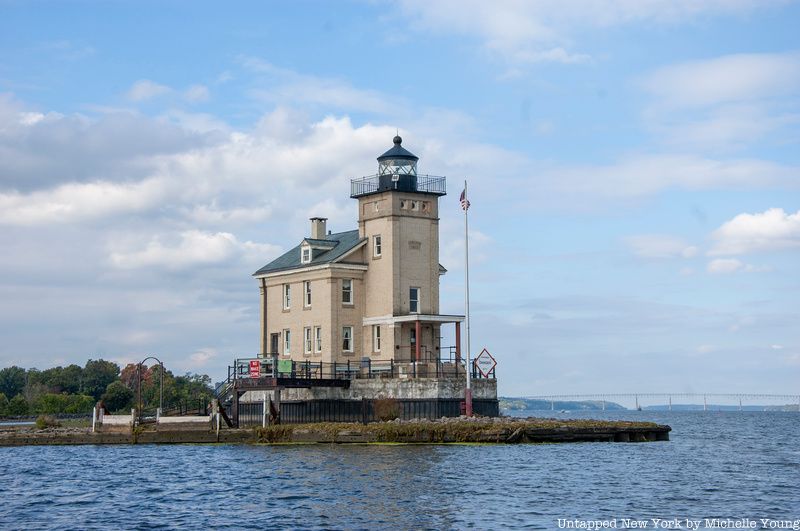
Built in 1915, the brick Rondout (II) Lighthouse (also known as the Kingston Lighthouse) marks the entrance to the Rondout Creek and remains fully operational to this day. It is owned by the city of Kingston and is maintained by the Hudson River Maritime Museum, which frequently hosts boat tours to the lighthouse.
The current Rondout Lighthouse, constructed out of yellow brick and featuring two-and-a-half stories, replaced two others structures before it: the first was a flimsy, wooden lighthouse which stood until 1867, when it was replaced by “Rondout I,” a bluestone house with a granite tower that has since been torn down.
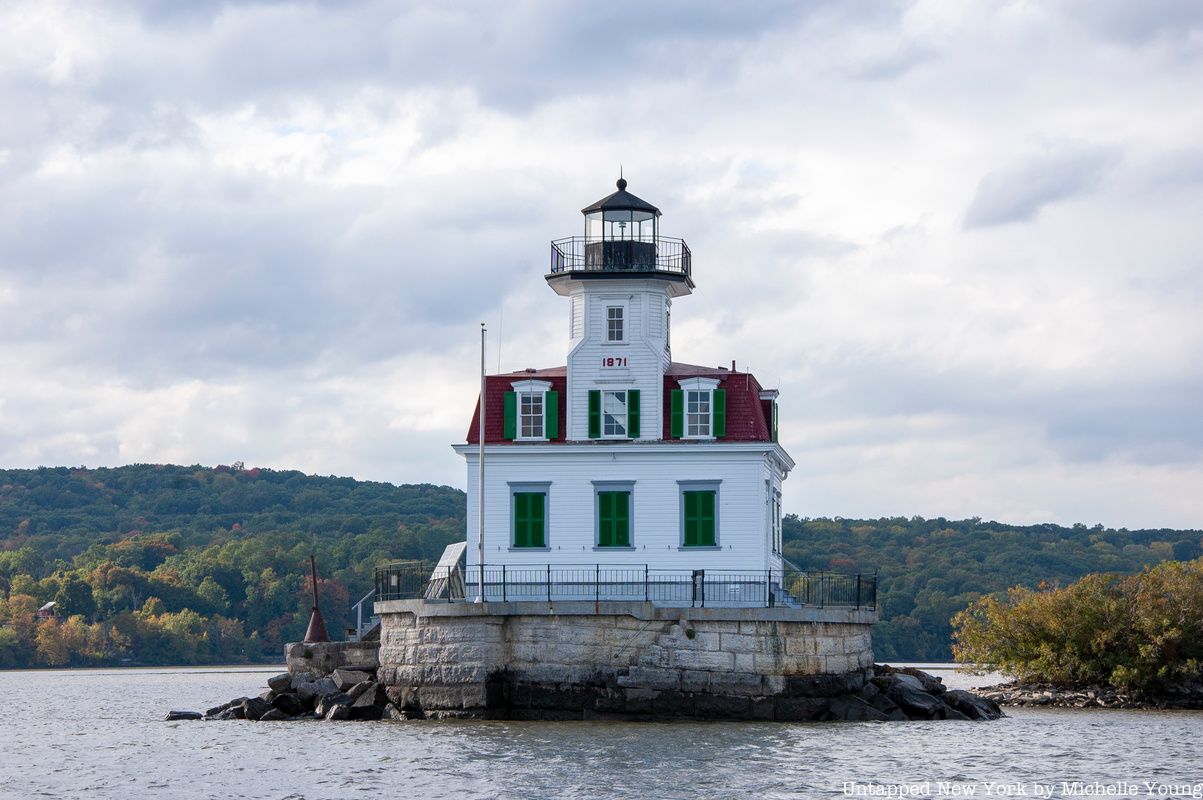
In 1838, construction began for a lighthouse near Esopus, New York. Due to flood and ice, however, the structure — built as the twin to the Roundout II — became heavily damaged by 1867. Funds were later raised to construct the current Esopus Lighthouse, which was established in 1871 to warn approaching mariners of surrounding mud flats.
Unfortunately, like its predecessor, Esopus eventually fell victim to ice damage. It shuttered in 1965, giving rise to the Save Esopus Lighthouse Commission, a small group dedicated to preserving and restoring the structure. Today, Esopus stands as the last wooden lighthouse in existence on the Hudson River (and the only one with a clapboard exterior). It’s affectionately regarded as the “Maid of the Meadow.” You can take a tour to the Esopus Meadow Lighthouse with the Hudson River Maritime Museum!
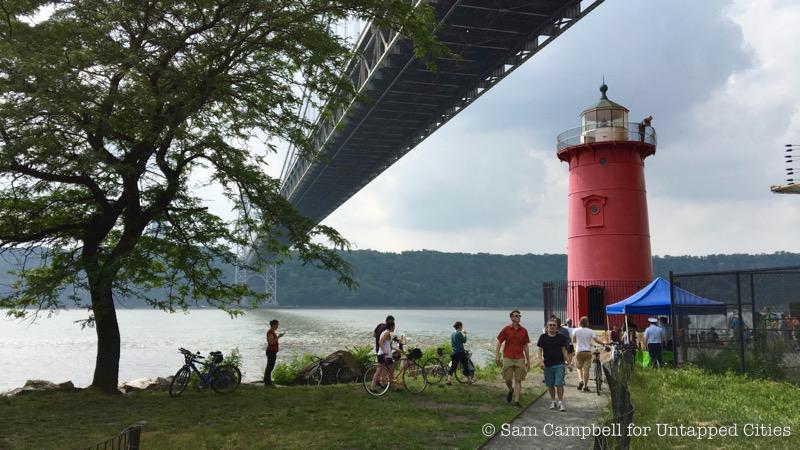
Although gentle breezes and quiet picnics draw attention away from its urban location, the adorable Little Red Lighthouse (officially Jeffrey’s Hook Light) serves as a stalwart symbol of maritime history. Located in Fort Washington Park beneath the George Washington Bridge, the century-old lighthouse, measuring 40-feet, was originally built in 1880 to guide ships from Sandy Hook, New Jersey using a 1,000 pound fog bell and a red flashing light. In 1917, the lighthouse became obsolete and was withdrawn from service.
Back in 1921, the existing navigational aids on the Hudson River were insufficient, so the U.S. Coast Guard disassembled and moved the lighthouse to its current location west of Washington Heights. But the construction of the “Great Gray” George Washington Bridge also rendered this location obsolete, just ten years after the move. Because of the sheer scale of the bridge and its construction, the light atop Jeffrey’s Hook became ineffective for any significant navigation.
Its nickname, the Little Red Lighthouse, derives from the children’s book The Little Red Lighthouse and the Great Gray Bridge

by Hildegarde Swift and Lynd Ward, written in 1942. It would be this book, beloved by schoolchildren, that catalyzed advocacy for its preservation in the 1950s. Today, it is maintained by the Parks Department, which infrequently opens the lighthouse to the public during occasional open houses events.
For photos inside the Little Red Lighthouse, click here.
Join Untapped New York Insiders for special tours inside the Little Red Lighthouse. You can join this free tour if you are an Untapped New York Insider. Not an Insider yet? Become a member today and access free behind-the-scenes tours and events in New York City all year long!

The 1869 Saugerties Lighthouse is unique in that it serves as both a Living Museum, as well as a renowned (and quite romantic) Bed & Breakfast with two rooms, a kitchen, a small parlor and an outside deck. Inside, the museum displays artifacts of the original lighthouse, which the now-standing Saugerties replaced in 1838.
The current lighthouse was deactivated in 1954, but was restored by the Saugerties Lighthouse Conservancy, and relit in 1990. If you’re looking for a scenic weekend trip, it’s the perfect location for an impromptu getaway from the city. See photos inside the B&B here.
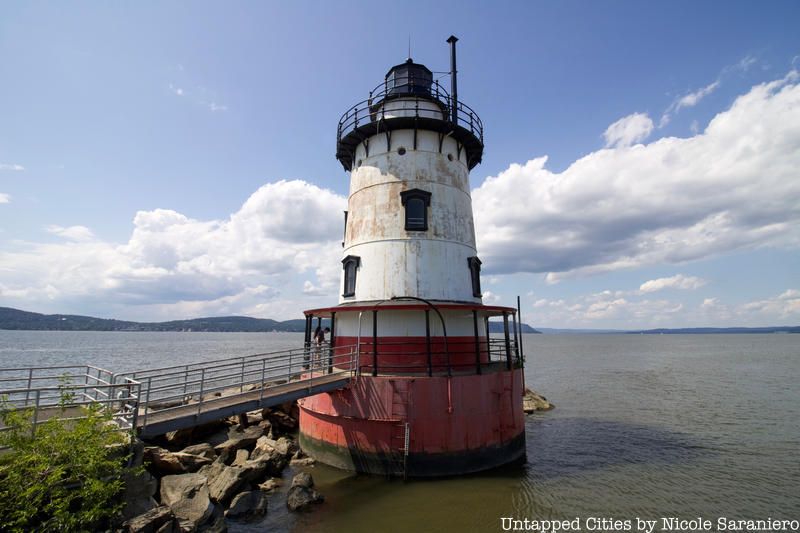
Also known as Tarrytown Light or the Kingsland Point Light, the Sleepy Hollow Lighthouse sits on the east side of the Hudson River. Made of steel, the conical, five-story structure — done in a sparkplug-style — was built in the 1880s in order to steer ships away from the dangerous shoals near Tarrytown and Ossining.
The light itself was automated in the mid-1950s. It operated until 1961, when it was decommissioned following the construction of the Tappan Zee Bridge, whose lights rendered the lighthouse obsolete. Today, Sleep Hollow operates as a museum, which holds a keeper’s log and old photos.
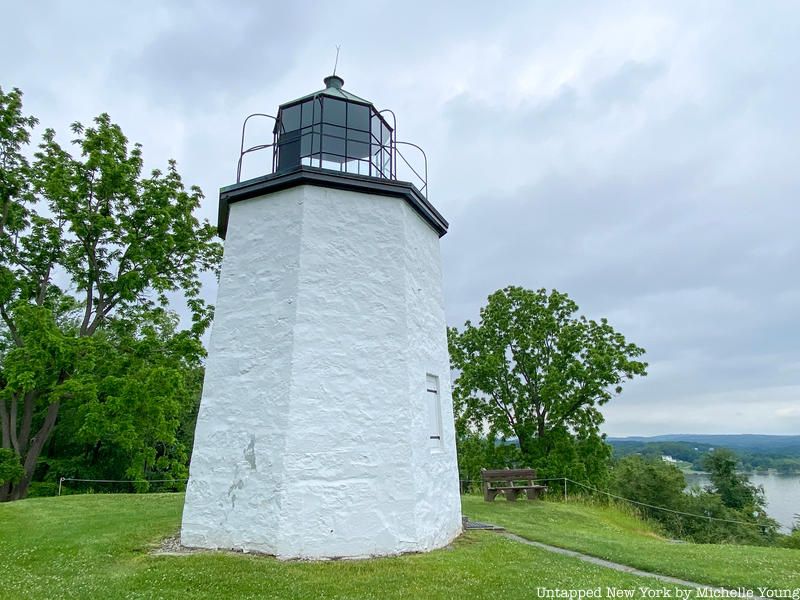
Located at the Stony Point Battlefield Historic State Site, Stony Point boasts the title of the oldest lighthouse on the Hudson River. Built in 1826, only a year after the completion of the Erie Canal, the structure was used to mark the entrance to the Hudson Highlands, and to warn maritime navigators about the rocks of the Stony Point peninsula.
Although it was decommissioned in 1925, the thirty-foot-tall octagonal lighthouse was in service for nearly a century before it was officially acquired by the NYC Department of Parks and Recreation. Following its restoration in 1995, its light was reactivated and is now operated by solar power.
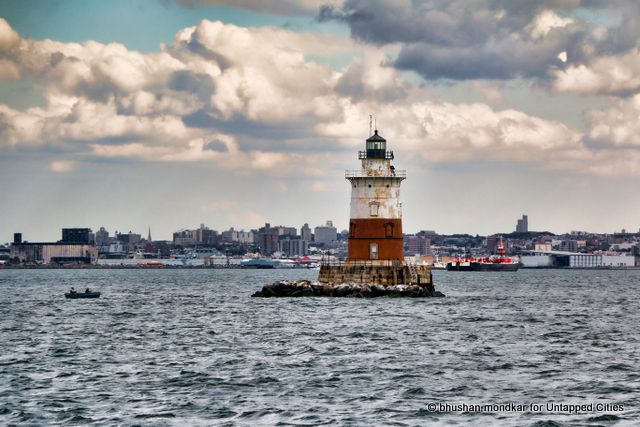
Robins Reef Lighthouse, located on the New Jersey side of the Hudson River and viewable on the Staten Island Ferry was originally built in 1839. The present tower was built in 1883.
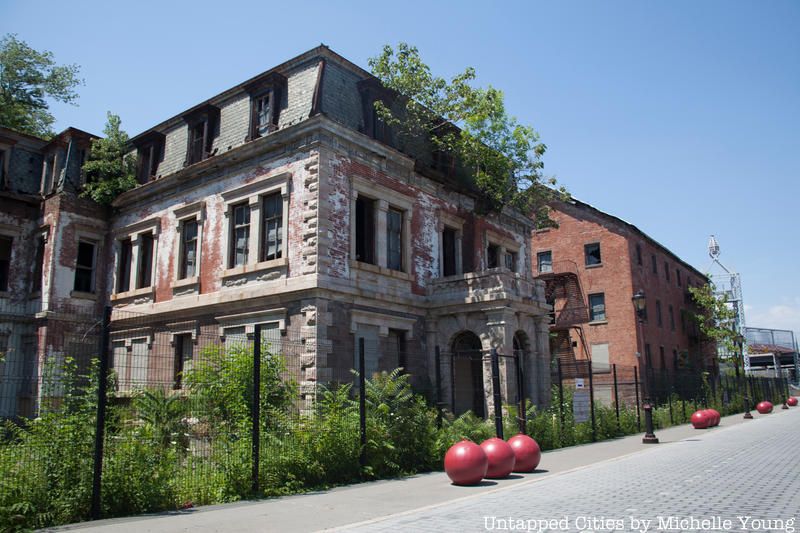
Although not technically situated on the Hudson River, the National Lighthouse Museum, located in Staten Island’s St. George neighborhood, is definitely worth a visit.
Officially opened in 2015, the museum stands on the former site of the New York Marine Hospital, where immigrants found to be in questionable health conditions were quarantined (prior to the establishment of the Ellis Island processing center). The United States Lighthouse Service General Depot, the lighthouse operations center for the entire country, later replaced the hospital site in 1862.
Today, the museum is dedicated to preserving the maritime heritage of lighthouse of lighthouses and lightships for future generations.
Next, discover the Top 10 Secrets of Hudson River and discover the many Lighthouses of NYC.
Subscribe to our newsletter